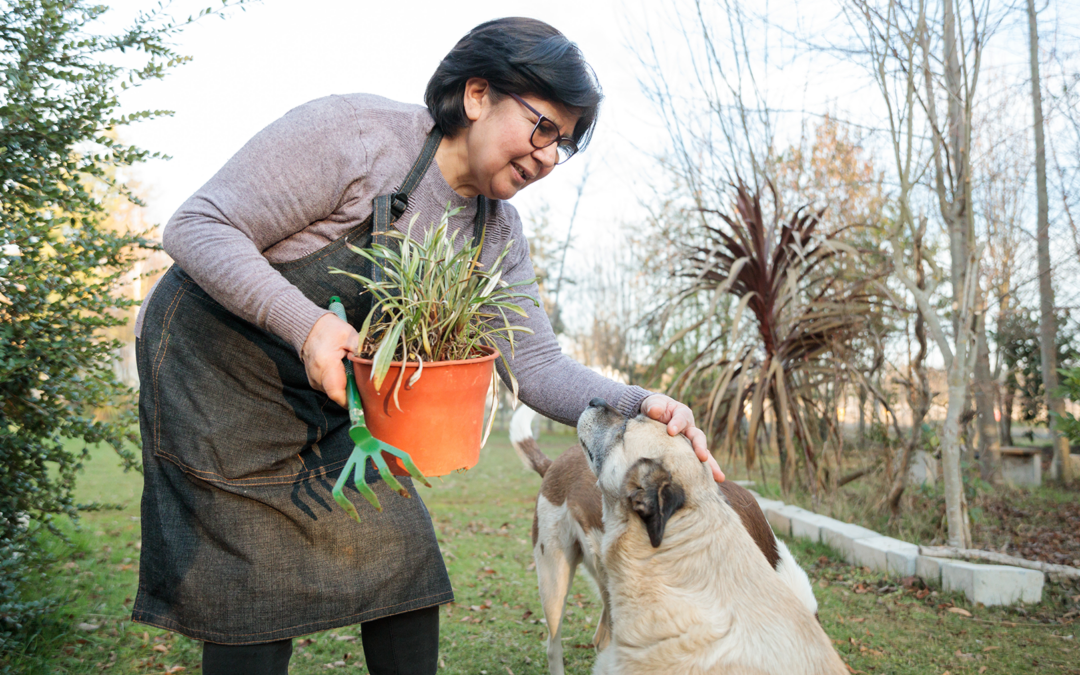
Dec 12, 2024 | AOC Business Partner
Sponsored content contributed by AOC Business Partner: Aetna
Employers are striving to make health coverage affordable and accessible while keeping costs under control. That’s why many are focusing on enhancing primary care benefits. By offering preventive services like cancer and heart disease screenings, and treating common illnesses early, businesses can help their staff avoid costly, more complex medical needs down the line. Regular visits with primary care physicians (PCPs) also ensure better care coordination, keeping everyone involved in patient care on the same page. This proactive approach supports efficient health care delivery and lowers expenses.
In Oregon, Aetna®, a CVS Health® Company, offers flexible health plans designed to make primary care easily accessible. Convenient, high-quality care is the foundation for healthier employees and smarter cost management.
Employers can champion primary care adoption, health improvement
Employer-sponsored health insurance is the largest source of coverage for working-age Americans. This puts workplaces in a unique position to promote and encourage primary care because despite its importance, people don’t use it often enough. So, by investing in easier, higher-quality primary care for their teams—like plans that include virtual visits and simple-to-access preventive and routine services — everyone wins.
Employees stay healthier and more productive. Businesses experience less absenteeism and better workplace well-being. And all of this impacts an organization’s bottom line, particularly by lowering health care expenses.
Innovative primary care from Aetna
From industry-wide challenges with primary care to the everyday pressures on your business, Aetna is delivering simplicity. Our flexible plan designs put affordable primary care and high-touch engagement within reach while offering your business better cost management.
What’s more is that with an Aetna plan, you get access to an extensive suite of resources and solutions from our parent company, CVS Health, too.
For instance, “anytime” and “any place” care isn’t just in demand. It also saves employees time and money. And through CVS Health Virtual Primary Care™, employees can select a PCP and see the same provider each time they need care. It’s cost effective and much more than just telemedicine because it creates trusting relationships between our members and their providers. Similarly, CVS Health Virtual Care® gives your team 24/7 treatment for episodic illnesses and injuries from the comfort of their own home (or anywhere else) with no drive time or waiting room.
Together, we’re improving health and controlling costs
At Aetna, our commitment to enhancing health doesn’t end with virtual care solutions. Our robust statewide and national network of high-quality PCPs and flexible plan options work together with other innovative products and services to help your employees bring their best selves to work. All the while, you can rest assured their care is affordable with one of many plan options that include $0 out-of-pocket primary care services.
Our consultative support and innovative strategies for Oregon businesses and their teams go beyond benefit plan design because it takes more than just insurance coverage to achieve better health. We’re working with you toward it all—employee well-being, access to care and cost management. It’s how healthier happens together®.
To take your health plan to the next level, contact your Aetna® representative or visit Aetna.com.
Aetna is the brand name used for products and services provided by one or more of the Aetna group of companies, including Aetna Life Insurance Company and its affiliates (Aetna). Aetna is part of the CVS Health® family of companies.
CVS Health Virtual Primary Care™ and CVS Health Virtual Care™ services are only available in the U.S. Limitations may apply based on service, location or health plan. Members enrolled in qualified high-deductible health plans must meet their deductible before receiving covered non-preventive services at no cost-share.
This material is for informational purposes only. Information is believed to be accurate as of the production date; however, it is subject to change. Refer to Aetna.com for more information about Aetna plans. Health benefits and health insurance plans contain exclusions and limitations.
©2024 Aetna Inc.

Dec 10, 2024 | AOC Business Partner
Sponsored content contributed by AOC Business Partner: Nine Peaks Solutions
Nine Peaks Solutions has been making waves by helping organizations streamline their operations and embrace the digital age. The firm’s expertise in implementing Laserfiche’s cutting-edge solutions has enabled numerous government organizations to automate workflows, improve efficiency, and enhance data security.
In Oregon and across the country, Nine Peaks assists organizations to:
- Integrate cloud and on-premise electronic content and documents so they are easily searchable and reportable. We use the Laserfiche application to unlock the value of legacy systems, synchronize data, and improve operational workflows.
- Automate forms and workflow processes, support compliance, document approval processes, streamline invoice processes, track and disseminate information requests; and
- Create an office environment where Finance, Human Resources, Legal, Information Technology, Social Services, and Vendors/Suppliers speak the same language.
Revolutionary Tools & The Skill to Use Them
Clearly, scanning your paper documents is not enough. By tracing those files back to their source, identifying those that are most current and relevant, and making them available instantly and seamlessly, you’ve improved your organization’s efficiency. Being able to have a working backup copy of the current paper-based documents is also an invaluable asset for disaster recovery and operational continuity.
Here are a few of the benefits of using Laserfiche:
- Streamlining Processes
- Reducing Manual Tasks
- Data Protection
- Improving Collaboration
- Eliminating Paper Filing
Sole Focus
At Nine Peaks Solutions our sole focus is helping organizations achieve peak performance through technology integration and optimization. If you’re ready to have all your departments, and the software they use, communicate seamlessly using an affordable, scalable single-source document management system, we’re here to help. We’ll start by taking a complete look at your organization’s processes, digital and paper assets, then present you with a clear plan, a firm budget, and an achievable schedule to swiftly boost productivity, efficiency, regulatory compliance with vastly improved employee, vendor and customer experiences.
We hope you stopped by the Nine Peaks’ booth at the recent AOC conference, and we had an opportunity to talk. If not, please contact us to learn more by visiting our website: NinePeaksSolutions.com/AOC
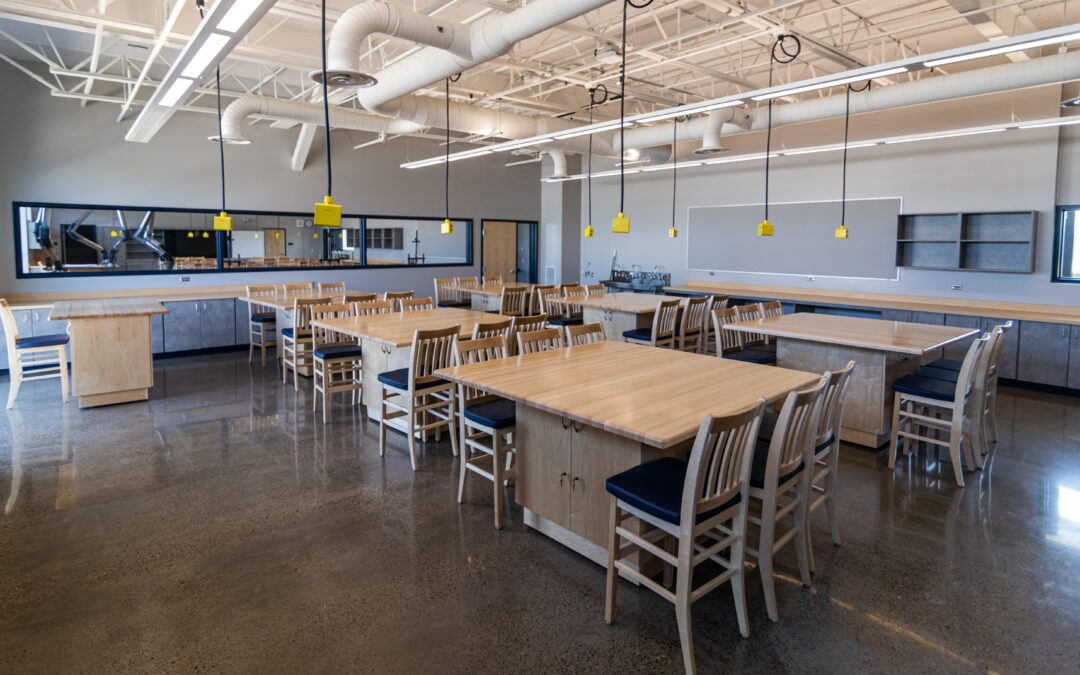
Dec 9, 2024 | AOC Business Partner
Sponsored content contributed by AOC Business Partner: Oregon Corrections Enterprises
Oregon Corrections Enterprises (OCE) goes beyond production—it’s about creating pathways for transformation. Through various industries, OCE provides incarcerated individuals with skills training and experience that prepare them for life beyond incarceration. Among its key offerings, OCE’s furniture division stands out, blending craftsmanship with social impact to deliver high-quality products to government agencies, schools, businesses, and more throughout Oregon.
From ergonomic office furniture to custom seating and durable multipurpose tables, OCE’s furniture is known for its meticulous attention to detail. Each piece reflects the skills of trained artisans and carries a deeper significance — lives being transformed. Adults in custody (AICs) work alongside industry professionals, learning trades such as woodworking, upholstery, and design. Recently, OCE expanded its capabilities to include the design, manufacturing, and installation of casework, further enhancing the scope of its offerings. These skills, backed by certifications, empower AICs to find employment after release, lowering recidivism rates and providing a renewed sense of purpose.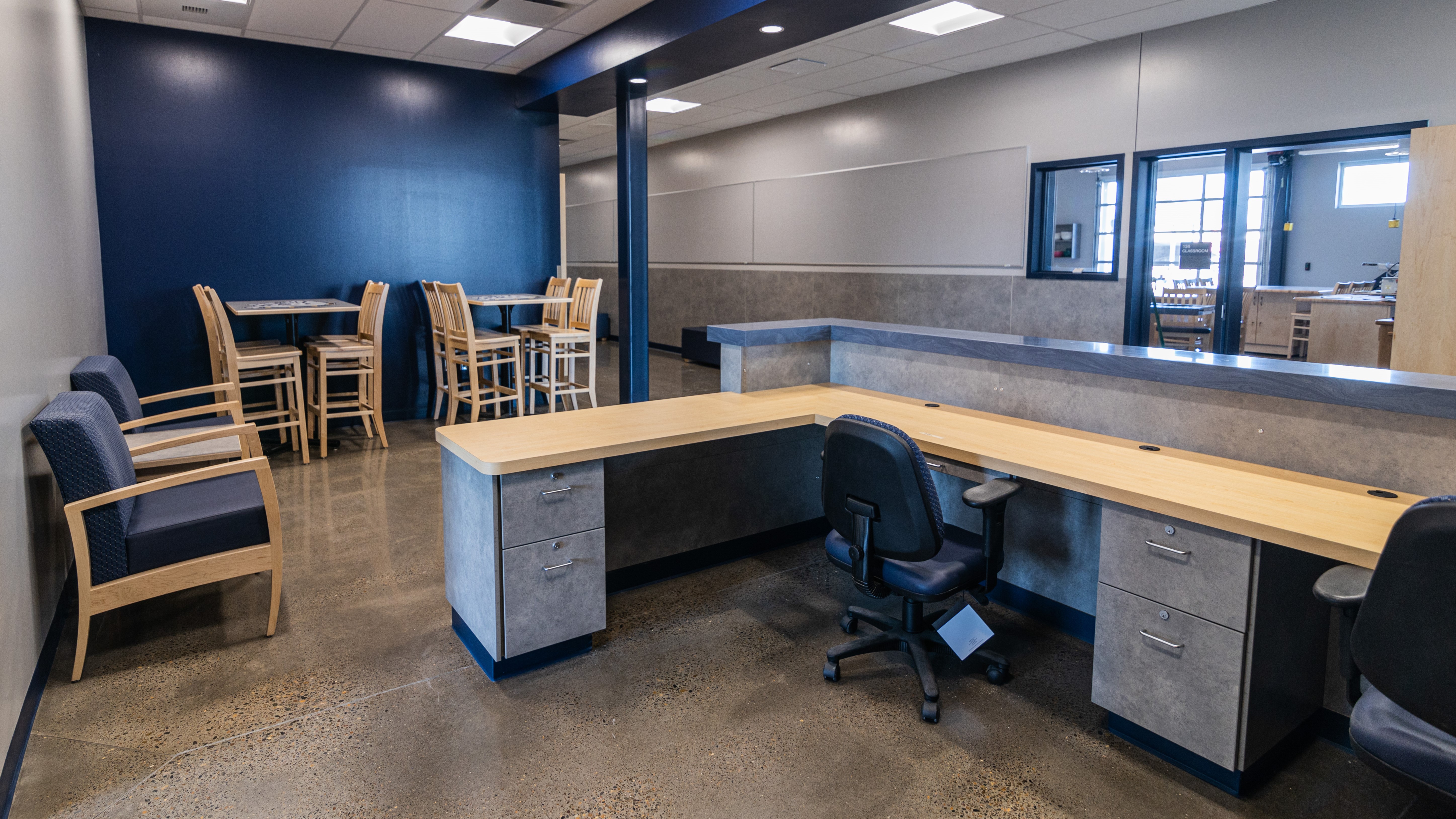

While furniture production is a hallmark of OCE, it is just one of many industries offered. OCE’s diverse operations include signage manufacturing, call centers, laundry services, garment production, multimedia design, and the iconic Prison Blues™ denim apparel line. Every industry presents AICs with skill-building opportunities that prepare them for diverse career fields, from textiles to customer service and digital media.
OCE offers a distinct range of products and services that cater to the needs of county governments, public agencies, and local businesses. By partnering with OCE, county agencies can benefit from competitive pricing, quick turnarounds, and exceptional customer service—all while supporting a mission that positively impacts the lives of AICs.
One significant advantage for Oregon Counties is the ability to procure OCE products through the use of interagency agreements or the OregonBuys platform, where OCE is part of the punchout e-commerce process. This system allows counties and state agencies to streamline their purchasing processes. Under Oregon’s procurement rules, products and services provided by OCE are exempt from competitive bidding requirements. This means that government agencies can bypass the often time-consuming bidding process, saving both time and resources. By choosing OCE, clients not only support a social good but also benefit from faster, more efficient procurement.
Supporting OCE isn’t just about obtaining quality furniture or signage—it’s a direct investment in people and the community. By working with OCE, counties help support transformative programs that reduce recidivism rates and contribute to safer, stronger communities. Together, we’re not just providing products—we’re making an investment in Oregon’s future.
Whether you’re seeking custom-designed office setups or durable outdoor signage, OCE’s offerings reflect the organization’s core belief: with the right opportunities, people can change their lives. Every project helps ensure a lasting positive impact on both individuals and the community.
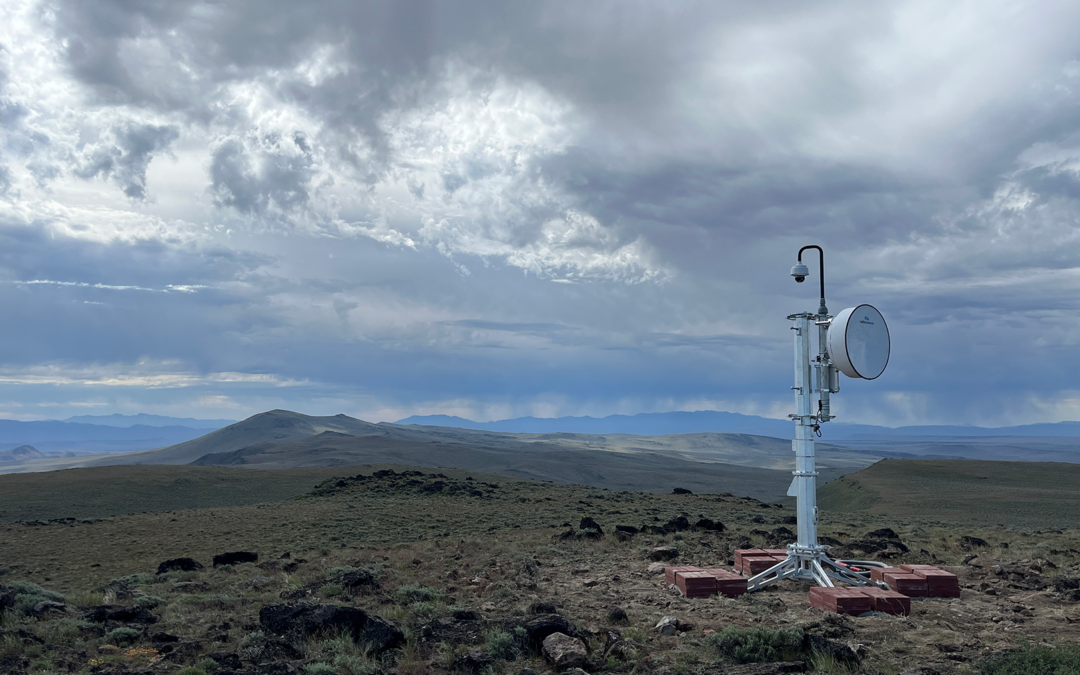
Oct 29, 2024 | AOC Business Partner
(Pictured above: Acty Mountain camera in Harney County. Each camera can rotate 360 degrees, tilt 220 degrees, and zoom up to 40 times. With near-infrared capabilities, they have a range of up to 30 miles in the day and 40 miles at night.)
Sponsored content contributed by AOC Business Partner: University of Oregon
The frequency and severity of wildfires are rising, driven by climate change, decades of fire suppression, and growth in the wildland-urban interface. But a lab at the University of Oregon has deployed a wildfire intelligence platform that gives counties new tools to spot and track wildfires.
The Oregon Hazards Lab at the University of Oregon (OHAZ) is now part of the world’s largest network of public wildfire cameras. OHAZ has installed dozens of cameras on telecommunications and lookout towers with long-range, 360-degree views of the surrounding landscape. Together, they enable firefighters to discover new ignitions, receive visual information to inform suppression efforts, and monitor fire behavior through containment while keeping people out of harm’s way.
OHAZ has been able to rapidly grow its wildfire camera network thanks to funding by the Oregon State Legislature, the Bureau of Land Management, the U.S. Forest Service, the Federal Emergency Management Agency, public utilities, and local partners. There are currently 57 cameras in Oregon, with plans to deploy 75 cameras by the end of 2025 and hundreds more in future years.
In addition, U.S. Senators Ron Wyden and Jeff Merkley directed funds this year to OHAZ to implement recommendations of the Oregon Wildfire Detection Camera Interoperability Committee. The committee is co-chaired by OHAZ and the Oregon Department of Forestry and aims to increase cooperation between agencies in detection camera efforts.
View Wildfire Cameras on the ALERTWest Platform
Any member of the public can view live and timelapse camera footage by visiting ALERTWest.live. This platform displays over 1,200 cameras operated by OHAZ and universities in other western states. In August 2024 alone, more than 12,000 unique users watched Oregon’s wildfire cameras, showing the impact that these tools can have on public safety and situational awareness during fire season.
Emergency managers, firefighters, and other stakeholders with public safety needs can receive login credentials to ALERTWest that allow them to rotate, tilt, and zoom the cameras to monitor specific wildfires. Credentialed users can also receive automated alerts when a new ignition is detected in their region. Over 200 officials from more than 50 different agencies in Oregon currently have camera credentials, including county governments; local utilities, police departments, and fire departments; and land management agencies.
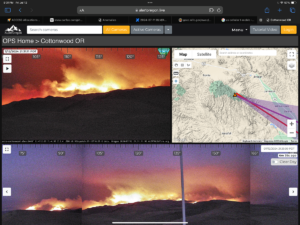
The Cottonwood camera enabled firefighters to monitor the Cow Valley Fire in July 2024. Every two minutes, ALERTWest software takes a panoramic image from each camera and scans the images for new ignitions using wildfire detection algorithms. ALERTWest employees confirm detection validity and then deliver alerts to credentialed users.
County Partnerships Bolster Community Resilience
County partnerships are at the heart of OHAZ’s success. More than simply using login credentials to watch for fires, county governments are integral to the camera network’s expansion and operation. They are crucial partners in hosting camera sites and providing access to the power and telemetry needed to keep cameras operating 24/7. These collaborations reflect the shared commitment of OHAZ and Oregon’s counties to safeguard rural and urban communities alike from the increasing threats posed by wildfire and other hazards. To date, OHAZ has deployed cameras in 19 of Oregon’s 36 counties, which have been valuable resources for monitoring the conflagrations that burned 1.9 million acres across the state in 2024.
OHAZ’s role does not stop with wildfire monitoring. It has also been a key player in Oregon’s efforts to prepare for earthquakes for a decade. The lab continues its work to expand the Pacific Northwest Seismic Network (PNSN) and strengthen the ShakeAlert Earthquake Early Warning System, which provides precious seconds of warning before dangerous seismic shaking arrives, giving counties the opportunity to protect residents and infrastructure from catastrophic damage.
OHAZ is working to secure additional funding to continue and expand its critical work. Counties interested in supporting OHAZ’s efforts at the state and federal level are encouraged to reach out to Joe Erickson at jerickson@uoregon.edu for more information on how they can help advocate for this critical resource.
OHAZ Wants to Work with Your Community
Emergency managers, firefighters, and other individuals with a public safety mission can email wildfirehelp@uoregon.edu to receive control and alerting credentials for Oregon cameras. Local governments can also email the lab to learn more about hosting camera sites in their county and to receive outreach materials for their residents. Together, we will be ready for next fire season, with an eye in the sky from the High Desert to the Cascade Range, from the forests to your town.
The Oregon Hazards Lab is a hazard monitoring group within the University of Oregon’s Department of Earth Sciences. OHAZ is developing a regional sensor network for understanding, detecting, and mitigating multi-hazards in the Pacific Northwest. The data collected by its instruments advance knowledge of natural disasters and the environment, protect the public through real-time alerting, and contribute to community-level resilience.

Oct 29, 2024 | AOC Business Partner
Sponsored content contributed by AOC Business Partner: NW Natural
Winter is just around the corner, and as safety is one of NW Natural’s core values, we’re always looking ahead. That’s why we want to share the resources that are available to help keep NW Natural customers warm and safe this winter. We encourage you to share these resources with your constituents. You are welcome to copy and paste the resources below into any newsletter or communication you have with constituents in NW Natural’s service territory.* And please reach out if you have any questions.
Below NW Natural has shared three great resources available to customers to prepare for winter. If you are looking for any support, don’t hesitate to reach out to them.
Bill Discount Program
NW Natural’s Oregon Bill Discount Program can save income-eligible customers money every month on their gas bill. Depending on their income level, bill discounts can range from 15% to 80%+. To date, NW Natural has enrolled nearly 50,000 customers — helping to lower household energy bills in Oregon.
The application takes only minutes to complete online, by email, traditional mail, or over the phone. Proof of income is not required to apply. If you are interested in applying or learning more, you can find more information here, or call 503-226-4211 with any questions.
Winter weatherization kits
Weatherizing your home can help immensely with energy savings. And while home upgrades can be expensive, there are some quick, easy improvements you can make. We’ve assembled some of the top winter weatherization items into DIY kits that are available to NW Natural customers. These kits often include:
- Rope caulk
- Door sweep
- Outlet sealers
- Window insulation
- Weatherstripping tape
- Power bank
If you’re curious about getting a weatherization kit, you can reach out to us here. And, to be even better prepared this winter, click here to learn more about how your natural gas appliances can work in a power outage.
Winter Preparedness Fair
NW Natural will be hosting a Winter Preparedness Fair in partnership with The Community Services Network and City of Portland’s Bureau of Planning and Sustainability. The fair will be a family-friendly event where you can get more tips to prepare for winter weather, access to bill assistance programs, and learn about utility resource planning. Find access to nonprofit resources, healthcare signup, family activities, free lunch, winter coats, food boxes, home weatherization kits, energy education, bill discount opportunities, vaccinations and more. Food and more provided — bring the whole family!
Details
What: Winter Preparedness Fair
When: Saturday, November 16, 11:00 AM-2:00 PM
Where: Parkrose High School, Portland
For more information, visit the Winter Preparedness Fair website.
*NW Natural works in the following Oregon counties: Benton, Clackamas, Clatsop, Columbia, Coos, Douglas, Hood River, Lane, Lincoln, Linn, Marion, Multnomah, Polk, Tillamook, Wasco, Washington, and Yamhill.
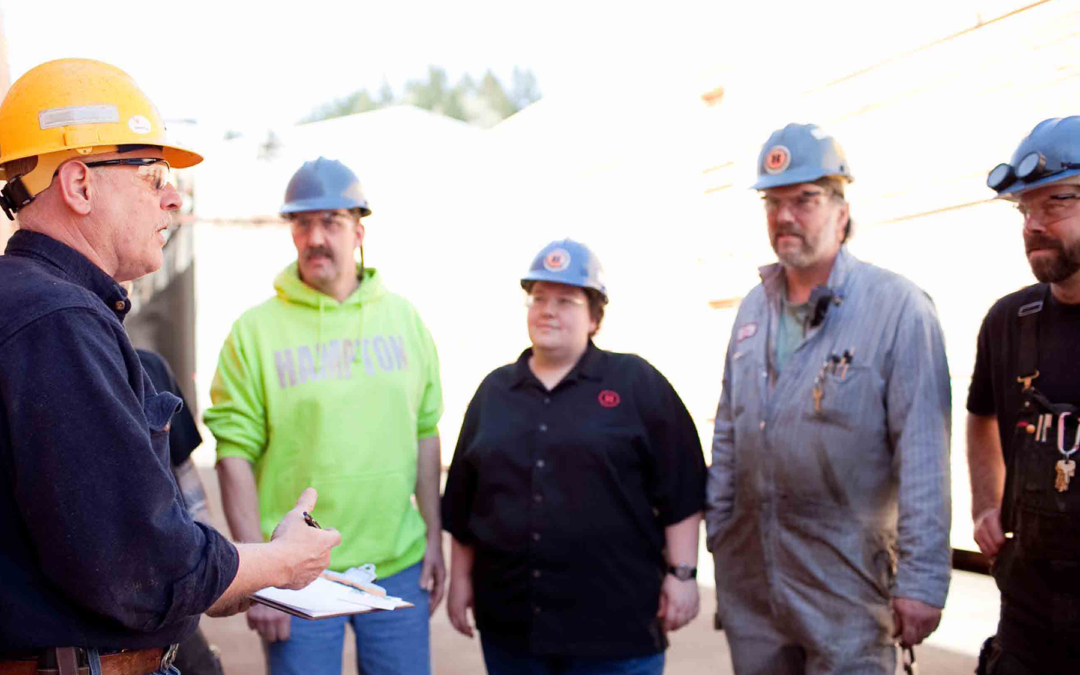
Oct 29, 2024 | AOC Business Partner
Sponsored content contributed by AOC Business Partner: Energy Trust of Oregon
Working with Energy Trust of Oregon, counties across the state are making strides to achieve their local clean energy goals while reducing operating costs, freeing up funds for core services and becoming more resilient in the face of natural disasters.
Energy Trust is an independent nonprofit organization dedicated to helping people and communities thrive through more affordable clean energy solutions. For more than 20 years, it has helped customers save on their energy bills, reduce carbon emissions and improve local economies.
Projects completed in 2023 alone will save customers $761 million over the lifetime of the equipment based on expected energy savings and renewable generation. Funded directly by utility customers, Energy Trust serves customers of Portland General Electric, Pacific Power, NW Natural, Cascade Natural Gas and Avista.
“As they say, when you’ve seen one county, you’ve seen one county. And likewise, energy needs also come in all shapes and sizes,” says Chris Lyons, Energy Trust’s senior manager of government and stakeholder relations. “That’s why we offer a variety of services for city and county governments based on their unique goals, concerns, geography and community needs.”
For many communities, the first step is energy planning to understand their local energy goals and energy management needs. Energy Trust can support these efforts with resources, community engagement and program design. For instance, in Deschutes County, Energy Trust worked with local organizations to support data collection and research on how other communities approach energy planning.
To help save energy, Energy Trust provides cash incentives, professional support and recommendations for solutions from adding insulation and upgrading lighting to replacing boilers and more. For new construction projects, it provides early design assistance, energy studies and expertise on how to construct a building with the most efficient technologies and methods, including net-zero energy construction.
“Whether in new or existing buildings, energy-efficient upgrades can create safer, more comfortable buildings that are also more affordable to operate,” says Lyons.
For renewable energy projects, Energy Trust provides project development assistance and installation incentives for rooftop solar systems, biopower projects at water resource recovery facilities and in-conduit hydropower projects at irrigation districts that generate clean electricity and deliver long-term savings. Here are some examples:
- Energy Trust provided early design assistance and other energy-efficient features for a major renovation of the Clatsop County Jail. The county received more than $20,600 in cash incentives for an estimated annual energy cost savings of over $6,900.
- The City of Redmond worked with Energy Trust to replace the roof on a city warehouse and install new insulation, which qualified for nearly $55,000 in cash incentives, zero out-of-pocket costs and an estimated annual energy cost savings of over $33,800.
- Energy efficiency and renewable energy projects can also help communities mitigate and adapt to the increasing prevalence of climate-related events, including winter storms, wildfires and heat waves. “We help communities identify strategies that work for them, like adding renewable energy and battery storage for backup power, using fire-resistant building practices and installing energy-efficient cooling for extreme heat,” said Lyons.
- Improvements can help sustain critical infrastructure and core municipal services. That’s the case in Beaverton, where the city worked with Energy Trust to ensure its public safety center—housing its police and emergency management department—is energy resilient and remains operational, even during power outages or emergencies such as an earthquake.
Want to learn how Energy Trust can help your community? Visit our booth at the AOC Annual Conference to connect with members of the Energy Trust team.
See more stories of clean energy solutions at www.energytrust.org.








